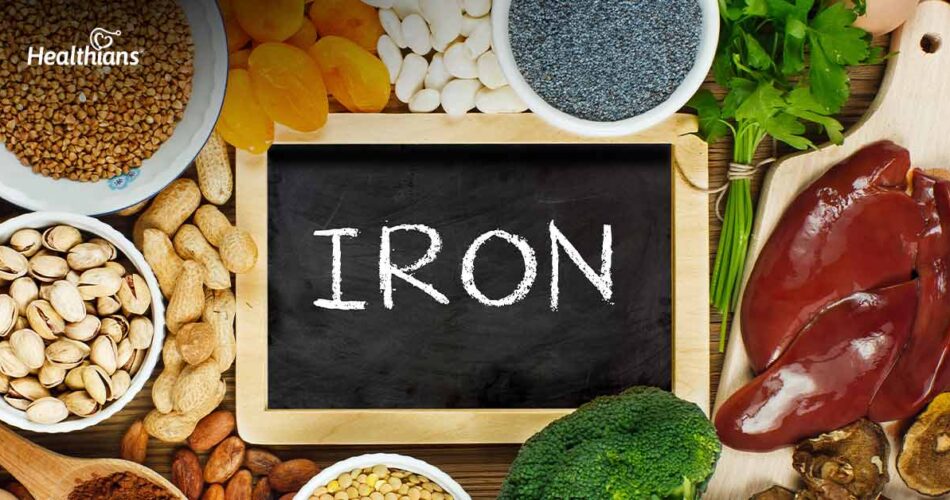Contributed by: Healthians Team
Introduction
Haemoglobin is a very important protein found in red blood cells. It is crucial for leading a healthy life. Its production is vital for most of your bodily functions.
Maintaining your haemoglobin levels is crucial to your health, and a deficiency can lead to serious consequences and affect your cardiovascular system as well.
So, it is necessary to boost your intake of foods that boost or maintain your haemoglobin levels and help in the synthesis of haemoglobin.
Clinical symptoms of low haemoglobin count
The most common symptoms of low levels of haemoglobin in the body include:
- Fatigue
- Shortness of breath
- Weakness
- Dizziness
- Headaches
- Chest Pain
- Pale and dry Skin
- Fast or irregular heartbeat
Currants
Blackcurrants are an effective way to increase the RBC count. Various studies say that 100 grams of blackcurrant can provide 20% of the daily requirement of iron to our body.
They can help you prevent fatigue caused by iron deficiency anaemia and also increase the number of red blood cells your body needs to carry oxygen around.
Watermelon
This refreshing fruit makes its way to the list of the top foods to increase haemoglobin levels. This is due to the high iron content present in it.
Additionally, it is also loaded with vitamin C, which makes the iron absorption process better and faster. If you wish to raise your haemoglobin, you should include it regularly in your diet.
Beetroot
Packed with essential nutrients, beetroots are often recommended to boost your haemoglobin. It is among the highest vegetable contributors to folic acid because of its high folate content.
It is also a good source of vitamin C and iron.
Broccoli
This cousin of cauliflower is a rich source of iron and B-complex vitamin folic acid. It contains around 2.7 milligrams of iron per 100 grams.
Apart from this, broccoli also contains a healthy amount of other essential nutrients, such as magnesium and vitamins A and C.
Spinach
This leafy green vegetable is, by far, the best veggie option for those looking for a haemoglobin boost.
The abundance of nutrients in this miraculous vegetable aids in increasing the haemoglobin count and regeneration of red blood cells.
It has been estimated that 100 grams of this leafy goodness contain nearly 4 milligrams of iron.
Legumes
If you follow a vegan or a vegetarian diet, it is necessary you include foods rich in iron. Legumes and their derivative products can be good sources.
Some high folate foods include soybeans, kidney beans, chickpeas, lentils, asparagus, spinach, sweet corn, oranges, and whole wheat.
Soybeans
Soybeans are considered to be beans that play a very important role in improving haemoglobin count.
Its nutritional value makes it a powerful source for people with low levels of haemoglobin. It can turn out to be a great option to maintain normal levels of haemoglobin, considering the fact that every 100 grams of soybeans are loaded with iron, folate, and vitamin C.
Dried fruits
Dried apricots, raisins, and dates are rich sources of iron and are easy to include in your healthy snacking regime. In fact, 100 grams of dry fruits have 0.8 milligrams of iron.
Apart from iron, dry fruits also contain various essential fibres and vitamins. Consuming a handful of dried fruits for breakfast can provide your body with instant energy and improve your haemoglobin levels.
Pumpkin or chia seeds
Eating pumpkin or chia seeds is another great way of increasing your iron intake as they are loaded with iron.
It has been estimated that 100 grams of pumpkin or chia seeds contain about 15 milligrams of iron, i.e., a whopping 83% of the daily recommended value.
Dark chocolate
Consuming your favourite chocolate can not only help to soothe your cravings, but it can also boost your haemoglobin levels.
One medium-sized bar can provide you with 17 milligrams of iron, meeting around 90% of your daily iron quota.
Other than being loaded with vital nutrients, minerals, and antioxidants, dark chocolate is also rich in iron.
Nuts
Almonds, pine nuts, hazelnuts, peanuts, cashew nuts, walnuts – all these nuts are amazing sources of iron.
They are not only tasty and fantastic food to have; they also give you a good 3 milligrams of iron per 30 grams.
Apples
Apples can help maintain a normal level of haemoglobin. Its high nutritional value can help to increase haemoglobin levels and promote healthy blood flow.
Apples are rich in iron plus other health-friendly components, which makes them suitable for boosting haemoglobin levels.
Final thoughts
Haemoglobin is an essential component of red blood cells. Self-management involves adding more iron to the diet. However, some cases of low haemoglobin can’t be corrected through diet alone. If your doctor feels that your haemoglobin count is lower than normal levels, he might advise a complete blood count test.




